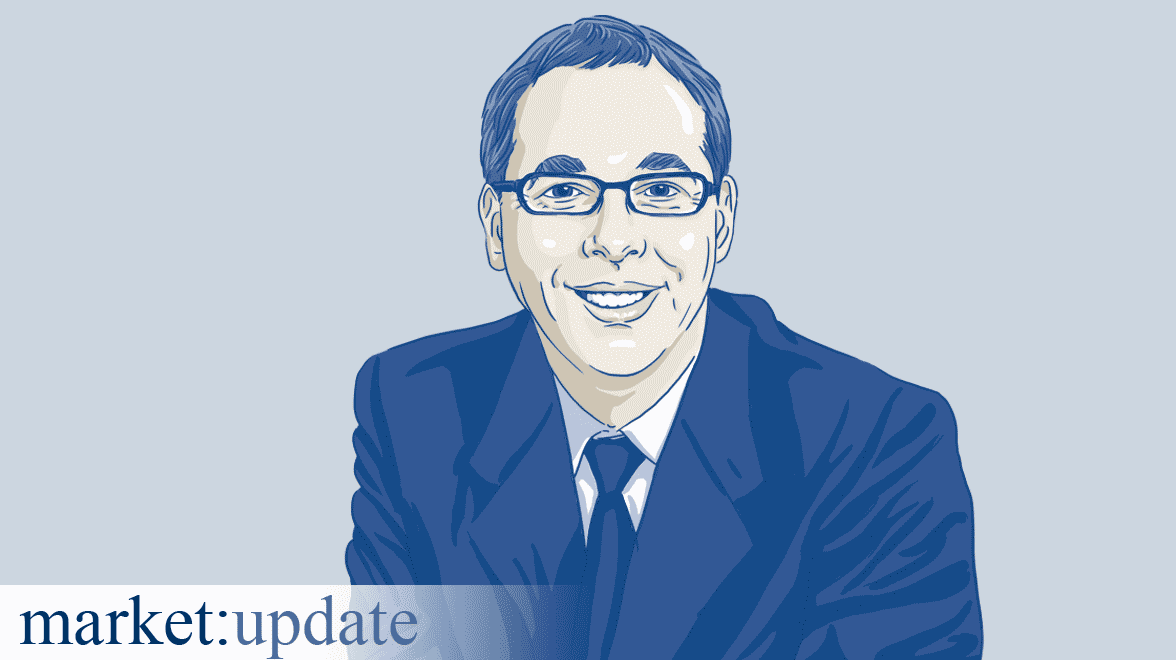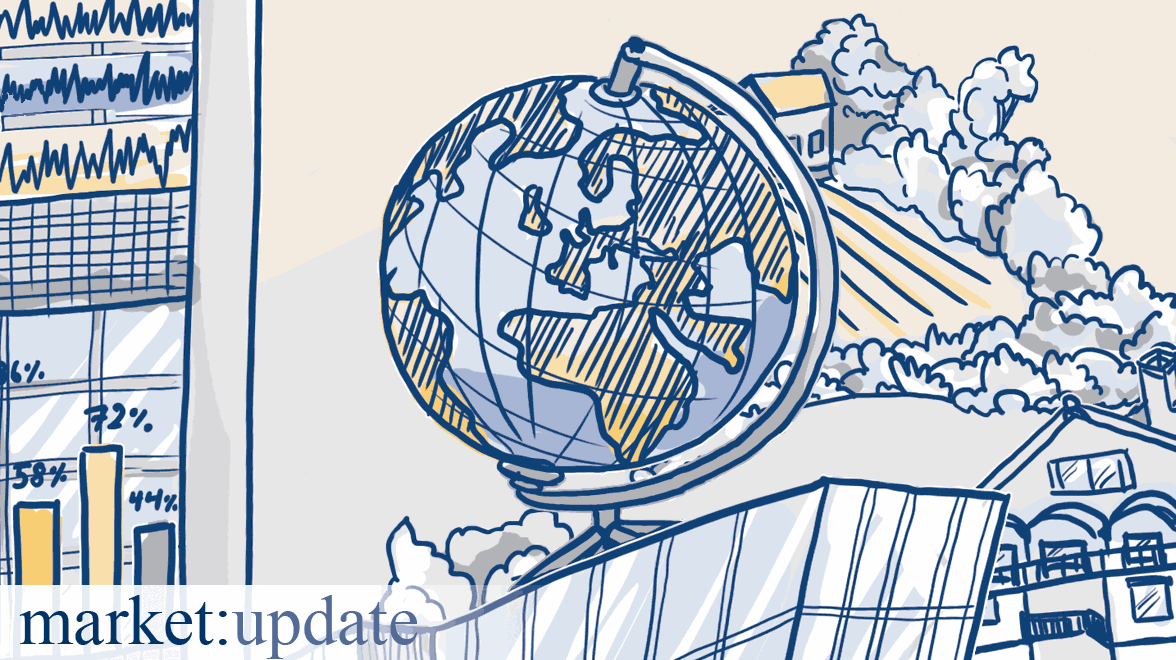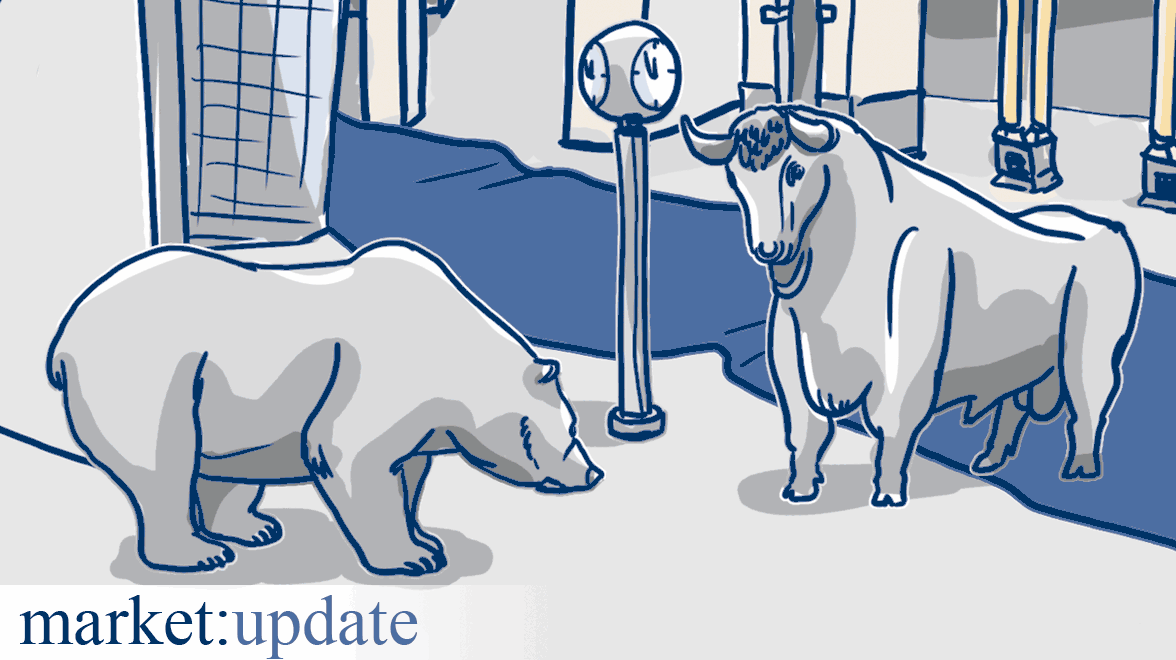2024: Basic scenarios for economies and financial markets
Good chances of New Economy 2.0
The global economy is once again facing a period of rapid technological change. Artificial intelligence, digitization and automation will significantly change working life in the next few years. In macroeconomic terms, this means an acceleration in productivity growth – and therefore economic growth.
We definitely see the possibility of New Economy 2.0. From 1995 to 2000 when we had New Economy 1.0, new business models that achieved high productivity and thus displaced unproductive companies emerged in the internet more and more. At the time, the Nasdaq technology exchange had already recorded strong price gains one to two years earlier in anticipation of the productivity revolution. Against this backdrop, the Nasdaq's price gains of more than 50 percent in 2023 could also be interpreted as a sign of an imminent acceleration in productivity growth.
Confirmation of this comes from corporate investment data. In order for companies to exploit the opportunities offered by new technologies, they must first invest. This means that corporate investment has a certain lead time before productivity development.
Source: Refinitiv Datastream, Metzler; As of: 31/12/2023
*Growth rate trend according to Hodrick-Prescott filter ** Moving Average over 10 years
Since the pandemic, the pace of investmen1 in the US has accelerated from below 3.0 percent to around 4.0 percent per year. It can therefore be assumed that productivity growth in the US will accelerate significantly in the next few years. Encouragingly, investment momentum in the euro zone has also improved to around 3.0 percent per year since the pandemic. Japan is somewhat disappointing, with only a very moderate upturn in investment momentum.
Source: Refinitiv Datastream, Metzler; As of: 31/12/2023
New Economy 1.0 was characterized by robust economic growth and very positive performance on the financial markets. Nominal economic growth in the USA was around 6.0 percent p.a. between 1995 and 2000 and interest rates were at a roughly comparable level. As a rule, central banks base their interest rate policy on the nominal growth trend. A central bank cannot lower the key interest rate too far below the nominal growth trend in an environment of robust economic growth because there is a risk of a noticeable acceleration in inflation.
*Geometric growth
Over the next few years, we could well imagine growth acceleration in the USA towards real GDP growth of 2.5 to 3.0 percent. This would be in line with nominal economic growth of 4.5 to 5.0 percent – and with interest rates within this range.
Structural improvement versus cyclical downturn
Due to the expected productivity trend, the US economy is evidently coping much better with the Fed's interest rate hikes than the euro zone economy is with those of the ECB. The stagnating lending by banks in the euro zone and the crisis on the property market clearly show that the ECB's key interest rates are already slowing down the economy considerably.
In contrast, the US economy is proving to be much more resilient. This is also reflected in consumption, which has been more or less stagnant in the euro zone for two years. We therefore expect economic growth of around 1.0 percent in the US and 0.2 percent in the euro zone in 2024.
Source: Refinitiv Datastream, Metzler; As of: 31/12/2023
However, weak consumer demand in the euro zone also means that high inflation in the past two years was not driven by demand but by supply. According to company surveys, there are currently increasing signs that supply is easing considerably – in supply chains, commodity prices, the labor market, etc. Inflation in the euro zone could therefore fall to around 2.0 percent this year and thus reach the ECB's inflation target again. In the USA, we expect inflation to reach 2.5 percent.
Source: Refinitiv Datastream, Metzler; As of: 31/10/2023
The noticeable decline in inflation in the euro zone, combined with only stagnating economic growth, should prompt the ECB to cut key interest rates as early as April. Overall, we expect key interest rates to be cut significantly from 4.0 percent to 2.0 percent by the end of 2024. However, due to higher inflation and better economic development in the USA, we expect US key interest rates will only be cut from 5.35 percent to 4.35 percent in 2024.
Good prospects for 2025
The key interest rate cuts this year could then trigger a new upturn in Europe and the USA in 2025. The euro zone in particular offers great potential for a strong upturn in consumption. Stagnating consumption in the euro zone has been accompanied by an unusually high savings rate over the past three years.
After the pandemic, the savings rate only fell moderately back to normal levels. If private households had spent the surplus savings built up during the pandemic, the savings rate would have fallen to significantly below-average levels. In 2023, there was even a noticeable increase in the savings rate again. There were two reasons for this: 1) high money market interest rates enticed consumers to save, and 2) the merely stagnant lending automatically resulted in higher savings at a macroeconomic level. Borrowing enables a negative savings rate for individual consumers.
Source: Refinitiv Datastream, Metzler
If the ECB cuts the key interest rate to 2.0 percent this year, the attractiveness of saving will be reduced and lending could pick up again. One consequence could be that consumers might then spend the immense surplus savings they have built up.
We therefore expect strong economic growth of 2.0 percent in the euro zone in 2025. In principle, we see China in a phase of stagnation comparable to Japan in the 1990s.
- Growth slowdown ahead
- Significant decline in inflation in the Euro area
- Slow decline in inflation in the USA
- Key interest rate cuts by the ECB before the Fed
Stock markets 2024
New Economy 2.0 should generally provide a positive framework for the stock markets in 2024. In 2023, the main beneficiaries were the producers of artificial intelligence and therefore primarily large tech companies from the USA.
In 2024, the focus could also shift towards companies that successfully utilize artificial intelligence and can thus achieve major increases in productivity. This would give companies from Europe a chance to perform well. Many small and medium-sized companies in Europe in particular have sustainable business models and are often very innovative.
Despite very positive performance in 2023, European equities are still attractively valued: Based on reported earnings, the price/earnings ratio of European equities was around 13.7 at the end of December (average since 1995: 15.7) and around 12.6 based on estimated future earnings (average since 1995: 14.1).
Source: Refinitiv Datastream, Metzler
*Since January 1995
Source: Refinitiv Datastream, Metzler
*Since January 1995
The high level of US government debt poses a major risk of temporary turbulence on the international equity markets. The US election campaign and the outcome of the US presidential election in particular could play a major role in this (see the publication on US government debt as a risk scenario)2 .
Of course, there is also still the risk of a recession in the USA and Europe. The still inverted yield curves on both sides of the Atlantic are signaling increased risks in this regard. Even without a recession, economic data is currently signaling rather low economic momentum. We therefore see risks of disappointment in corporate earnings growth in the first half of the year. Company valuations could also fall for the time being.
Against this backdrop, we anticipate a bumpy first half of the year for the international equity markets, followed by a marked recovery in the second half.
In principle, however, we expect moderate growth in corporate profits in all regions for 2024 as a whole and see opportunities for a higher valuation, particularly in Europe and Japan.
* Total Return Index in lokaler Währung
1 Moving average over 10 years of investment growth rate to better capture the trend
More articles
This document published by Metzler Asset Management GmbH [together with its affiliated companies as defined in section 15 et seq. of the German Public Limited Companies Act (Aktiengesetz – "AktG”), jointly referred to hereinafter as “Metzler“] contains information obtained from public sources which Metzler deems to be reliable. However, Metzler cannot guarantee the accuracy or completeness of such information. Metzler reserves the right to make changes to the opinions, projections, estimates and forecasts given in this document without notice and shall have no obligation to update this document or inform the recipient in any other way if any of the statements contained herein should be altered or prove incorrect, incomplete or misleading.
Neither this document nor any part thereof may be copied, reproduced or distributed without Metzler‘s prior written consent. By accepting this document, the recipient declares his/her agreement with the above conditions.
 Deutsch
Deutsch English
English


